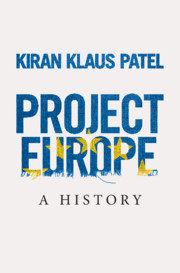Book contents
- Project Europe
- Project Europe
- Copyright page
- Contents
- Figures, Maps and Tables
- Abbreviations
- Frontispiece
- Prologue
- 1 Europe and European Integration
- 2 Peace and Security
- 3 Growth and Prosperity
- 4 Participation and Technocracy
- 5 Values and Norms
- 6 Superstate or Tool of Nations?
- 7 Disintegration and Dysfunctionality
- 8 The Community and Its World
- Epilogue
- Acknowledgements
- Notes
- Bibliography
- Index
5 - Values and Norms
Published online by Cambridge University Press: 24 April 2020
- Project Europe
- Project Europe
- Copyright page
- Contents
- Figures, Maps and Tables
- Abbreviations
- Frontispiece
- Prologue
- 1 Europe and European Integration
- 2 Peace and Security
- 3 Growth and Prosperity
- 4 Participation and Technocracy
- 5 Values and Norms
- 6 Superstate or Tool of Nations?
- 7 Disintegration and Dysfunctionality
- 8 The Community and Its World
- Epilogue
- Acknowledgements
- Notes
- Bibliography
- Index
Summary
The European Union is sometimes described as a ‘community of values’. Is this adequate? Legally anchored civil and human rights and democratic guarantees were not the foundation upon which institutional cooperation was built. Instead they sneaked in by the back door. Especially in the early days the centrality of values was by no means obvious, and certainly contested. The search for a specific institutional ethos only became significant in the course of the 1970s. Today’s EU was not born as a community of values; instead it grew into one in a fascinating, decades-long process characterised by ambivalence and contradiction. That does not mean that values and norms played no role in earlier stages of the integration process. At the beginning of the 1950s these questions were already hotly debated, and the value-orientation is clearly reflected in the way European integration was very much understood as a contribution to securing peace. To that extent, the European project is actually inconceivable without the values that grounded and legitimised it; values and norms shaped the EC’s institutions and informal practices at very fundamental levels. But without a legally binding framework they initially remained fragile and vulnerable.
- Type
- Chapter
- Information
- Project EuropeA History, pp. 146 - 175Publisher: Cambridge University PressPrint publication year: 2020

